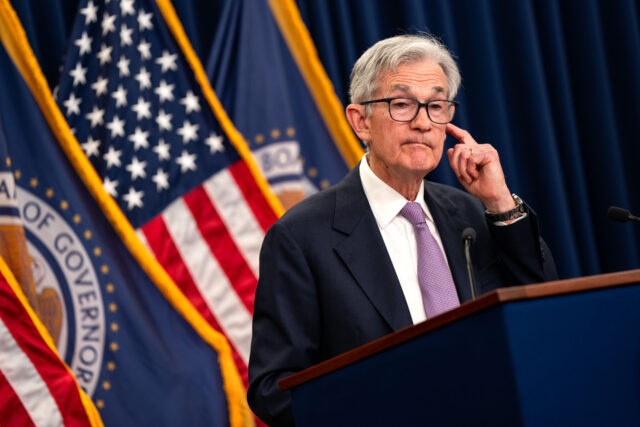Another Bidenflation Setback as Producer Prices Climb Again
 Photo by Kent Nishimura/Getty Images
Photo by Kent Nishimura/Getty Images
Prices of goods and services produced in the U.S. climbed at a brisker pace in October, suggesting the Federal Reserve’s efforts to bring inflation down to pre-pandemic levels may face prolonged challenges.
The producer price index (PPI), which gauges prices that producers receive for goods and services, rose 0.2 percent last month, the Department of Labor said Thursday. The report also revised September’s producer price growth upward, indicating a slightly faster pace than previously estimated.
Year-over-year, producer prices increased 2.4 percent through October, up from a 1.9 percent annual rise in September. The latest data marks the highest annual increase in four months, a signal of persistent inflation pressures.
Core producer prices, a metric which strips out the volatile food and energy categories, rose 0.3 percent last month. The 12-month rate for core producer prices climbed to 3.5 percent from September’s 3.3 percent, underscoring the strength of underlying inflationary pressures.
Meanwhile, consumer inflation also showed renewed signs of upward movement. The consumer price index (CPI), which measures what consumers pay for a range of goods and services, rose to an annual rate of 2.6 percent in October from 2.4 percent the month before, marking the first increase in seven months.
The uptick in both wholesale and consumer prices, described by Federal Reserve officials as a “bump” in inflation, could temper expectations on Wall Street for a swift easing of the central bank’s high interest rates. With inflation proving more resilient than anticipated, the Fed may have to tread carefully as it considers any moves to lower borrowing costs in the coming months.
The consumer price index and the producer price index are both measures of inflation. While the CPI measures prices from the point of view of the household consumer—and therefore includes prices of imports but excludes prices paid by the government and businesses for their consumption, as well as exports—the PPI measures prices from the point of view of U.S. sellers. PPI excludes import prices but includes sales to the government, businesses, and exports.
Source link

